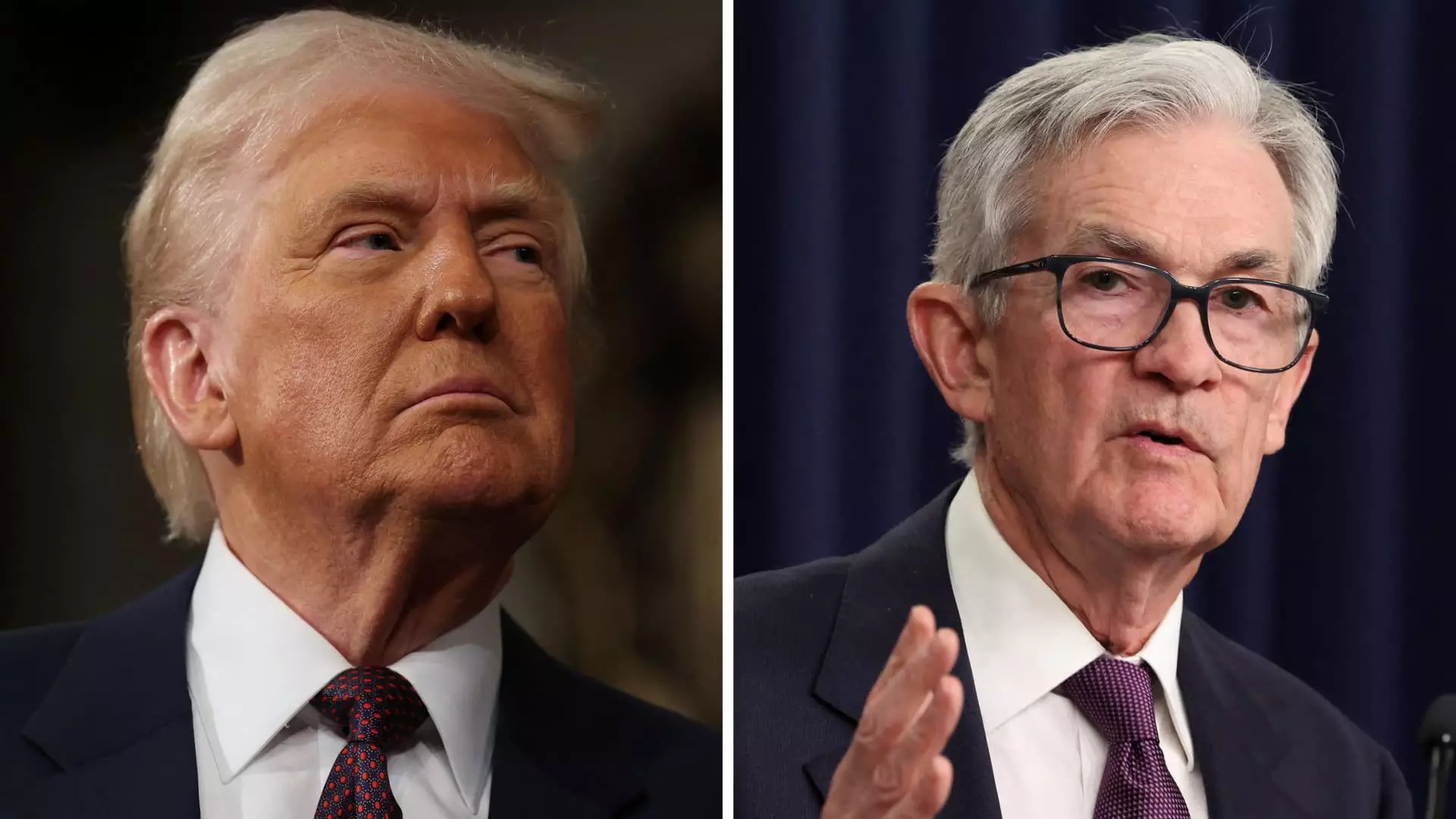Within the intricate web of U.S. economic policy, few tensions have been as publicly scrutinized as the ongoing saga involving President Donald Trump and the Federal Reserve. Recent reports suggest that Trump contemplated dismissing Fed Chair Jerome Powell, a move that instantly stirred financial markets and political debate. While Trump publicly denied these intentions, the very possibility exposed underlying tensions about monetary policy independence and political interference. This episode underscores an essential truth: the autonomy of central banking is often vulnerable to political appetites, especially when economic headwinds threaten to undermine leadership.
More significantly, Trump’s reported attempts to influence or oust Powell reflect broader frustrations with monetary policy’s trajectory. As the White House pushes for lower interest rates, the tension reveals an administration willing to risk market stability for short-term political gains. Despite the president’s later denial, markets reacted cautiously, illustrating how political signals—whether credible or not—can sway investor sentiment. This episode questions the resilience of the Fed’s independence and highlights the peril of politicizing monetary decisions in an already volatile economic climate.
Furthermore, the fallout from this saga extends beyond immediate markets. It raises serious concerns about future policymaker stability and the potential erosion of institutional credibility. If government insiders can contemplate removing a key institution’s leader based on policy disagreements, it sets a dangerous precedent that could undermine central banks worldwide, making them susceptible to political whims rather than data-driven policymaking.
Regulatory Battles and the Complex Future of Cryptocurrencies
Meanwhile, the legislative landscape for digital assets mirrors the broader tensions in U.S. regulation—fragmented, contentious, and fraught with internal disagreements. The House of Representatives recently advanced crucial crypto regulation bills amidst persistent opposition, extending debates into an all-time marathon vote. This struggle exemplifies the broader uncertainty about how cryptocurrencies will fit into the regulatory framework—whether as innovative financial assets or as risks needing strict controls.
The drawn-out legislative process exposes fractures within the Republican ranks, reflecting divergent visions about the future of digital currencies. Some lawmakers see digital assets as catalysts for economic growth and technological innovation, while others view them as potentially destabilizing or avenues for misconduct. The intense negotiation signals that, despite the hype, crypto regulation remains a battleground where clarity is elusive, and political alliances are fragile.
This legislative volatility has implications not just for the crypto industry but for investor confidence more broadly. Clear, consistent regulation could legitimize digital assets and attract institutional investment, but prolonged uncertainty fosters hesitation. As lawmakers navigate these turbulent waters, their success or failure to craft cohesive policies will influence the resilience of the crypto ecosystem and the overall investment climate.
Corporate Earnings and Market Resilience in an Uncertain Environment
On the corporate front, heavyweights such as PepsiCo and United Airlines showcase the mixed landscape of American business. PepsiCo, with second-quarter earnings surpassing Wall Street expectations, demonstrates the resilience of consumer staples amid global economic headwinds. However, softer demand in food and beverage volumes signals underlying challenges, especially as the company maintains its full-year outlook. This cautious optimism amidst headwinds underscores the importance of domestic market strength and strategic brand management in weathering international volatility.
Similarly, United Airlines reveals the vulnerabilities faced by the travel sector. Despite beating earnings per share estimates, it revised its forecast due to operational hurdles, notably at Newark Liberty International Airport. The FAA’s flight caps and staffing shortages highlight infrastructure fragility that hampers airline performance, with the cost implications substantial. Yet, the airline’s optimism about a robust finish to 2025 hints at a belief that these obstacles will be temporary, and that international and premium travel demand can drive recovery.
These corporate narratives emphasize an ongoing resilience but also a delicate balancing act between navigating short-term disruptions and positioning for longer-term growth. They serve as microcosms of an economy adapting to persistent uncertainties—ranging from regulatory hurdles to global supply chain challenges. Investors should read these signals as both cautious optimism and a reminder that even the strongest brands are vulnerable to macroeconomic shocks.
Strategic Challenges for Tech Giants and Investor Skepticism
Adding a layer of corporate governance complexity, Tesla faces scrutiny from New York State authorities over recent internal changes designed to block certain shareholder lawsuits. The dispute revolves around Tesla’s move to alter its bylaws, requiring a 3% stake for derivative lawsuits—an increase from earlier thresholds that effectively limits smaller investors’ ability to challenge the company’s conduct.
Critics, including the New York State Common Retirement Fund, argue this move is a calculated attempt to entrench management and dismiss shareholder rights. Given Musk’s controversial reputation and Tesla’s high-profile market position, such governance issues are likely to attract ongoing attention. The underlying concern is whether Tesla, as a market leader, will prioritize shareholder engagement and transparency or continue down a path of strategic opacity aimed at consolidating control.
This controversy exemplifies the evolving landscape of corporate accountability where investor rights and managerial power often clash amid technological innovation. The outcome could influence future governance standards across tech-centric firms, affecting not just Tesla but the broader industry’s credibility.
In essence, these overlapping stories—central bank politics, legislative struggles, corporate resilience, and governance disputes—highlight a market atmosphere fraught with complexity and opportunity. They remind us that strength in today’s economy depends not only on hardware or profits but on navigating an intricate realm of political influence, regulatory uncertainty, and strategic resilience. As we look ahead, those capable of adapting to these multifaceted challenges will determine the future trajectory of economic power.

